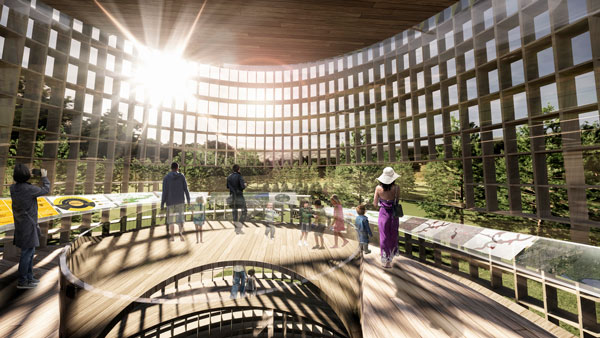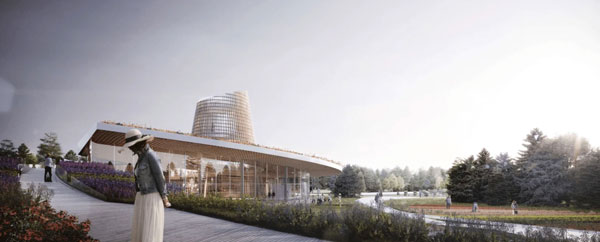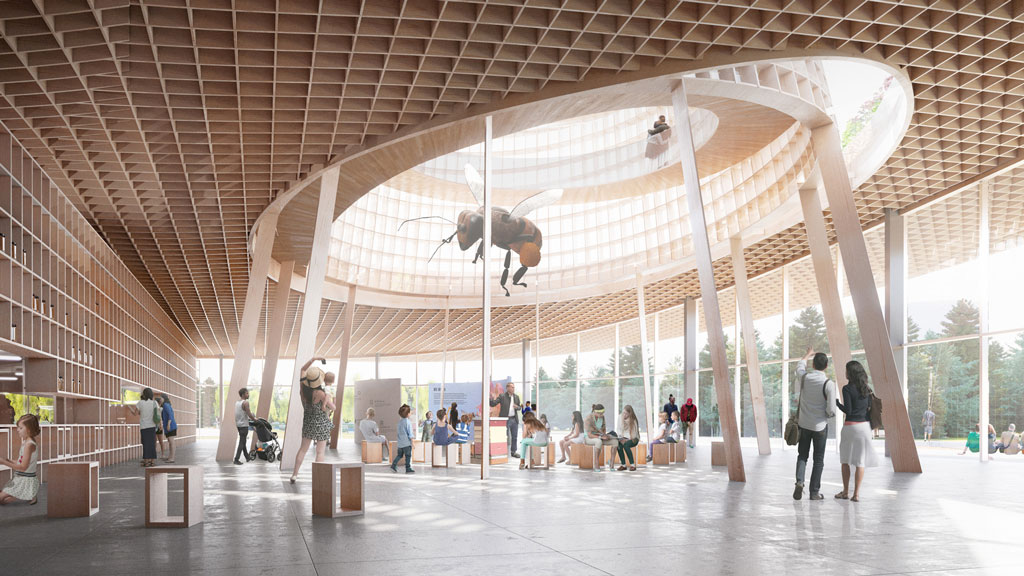A small colony of construction workers will soon be buzzing around the University of Guelph campus to start excavation work for a new, $16.1-million Honey Bee Research Centre (HBRC).
The 15,000-square-foot centre and laboratory is being built along Stone Road East on the site of a former tree nursery, about 200 metres from Townsend House, which is the current home of the HBRC.
Crews have removed trees and are working on obtaining remaining permits in order to start construction. Barriers have been erected to protect existing trees on the property.
“We are hoping to start excavation this summer and the thought is that it will take 18 months to 24 months from once we start the excavation until the project is finished,” explains Paul Kelly, research and apiary manager at the centre.
“After eight years of working on the project I’m pretty happy to see something happening.”
The idea of a new centre was first discussed several years ago. The present home of the centre, a 1950s-era raised bungalow, has space and accessibility issues.
“It wasn’t purpose-built,” says Kelly. “We made it work but our lab is a bedroom, our classroom is what would be a living room and we try to squish 40 people into a bungalow living room for courses.”
What started as a dream and some drawings on a chalkboard quickly picked up steam and soon became reality.
“We started speaking with people at higher levels at the university,” says Kelly. “Everybody got excited about it and wanted to help. It’s been really exciting to see everybody jump on board.”
Lydia Luckevich, a university alumna, is providing $7.5 million for the project. The centre will be named for her and her late husband, Don Pinchin, founder of Pinchin Ltd. environmental consulting.
The cutting-edge, sleek- looking building has been designed by Moriyama Teshima Architects. Renderings show a single-storey structure with a sweeping curved facade and lots of windows.
The front of the structure will have a foyer and high ceiling that will open into exhibit and classroom space that is dropped down a half storey. Visitors will be able to look outside at trees and demonstration beehives.
At the front entrance, there will be a beehive in a glass enclosure for visitors to observe. In the research area of the structure, there will be a lab for bee breeding and incubation as well as enhanced facilities for various research projects involving faculty, students and collaborating investigators.
The building will provide more dedicated space for programs that attract a range of professional and backyard beekeepers as well as schools and other groups. Currently, those sessions run only in spring and fall but will be offered year-round in the new facility.

Construction on the centre is expected to be completed in 2025. Collaborative Structures Limited of Cambridge is managing the project.
The structure has been designed so it has a public area and separate research and production side.
Inside the research area, there will be a space for wintering honey bee colonies. The plan is to keep the temperature at 8 C and provide winter conditions that are the same every year.
“Winter is the toughest time for bees outdoors,” says Kelly. “We’ll still be wintering the majority of our bees outdoors but some indoor capacity will help us with our goals and our research.”
When moving honey boxes and equipment inside, some bees do get into the building. To keep them away from visitors inside the structure, special consideration is being given to some construction elements.
“What we’ve done is create bee-lock doors,” says Kelly. “From the outside, there will be no entry points. Even with little cracks, bees can find their way in, especially if they can smell honey inside.”
In hallways inside the research and production areas of the building, special doors will be installed to prevent bees from getting further into the building.
“We don’t want them getting into the public end of the building,” remarks Kelly.
Because researchers do a lot of trials with bees that take place indoors, one room will be used specifically to house bees and kept at 32 C with high humidity.

The new facility will allow the university to welcome more visitors to the HBRC and bring in more researchers.
“We have people from all over the world who want to come to work with us right now,” says Kelly. “We have a good reputation, so people want to come but we have limited capacity for them. We’ll be able to increase the number of people that we have coming in and, with the space that we have that’s going to be dedicated to education, we’ll be able to run continuous programming for beekeepers, homeowners and the general public, gardening clubs, you name it.”
The HBRC looks after the largest number of honey bee research colonies in North America. Staff at the centre tend to about 100 hives in the apiary located on the university grounds as well as another 200 hives at the nearby Arkell Research Station and 12 privately run farms.



Recent Comments
comments for this post are closed